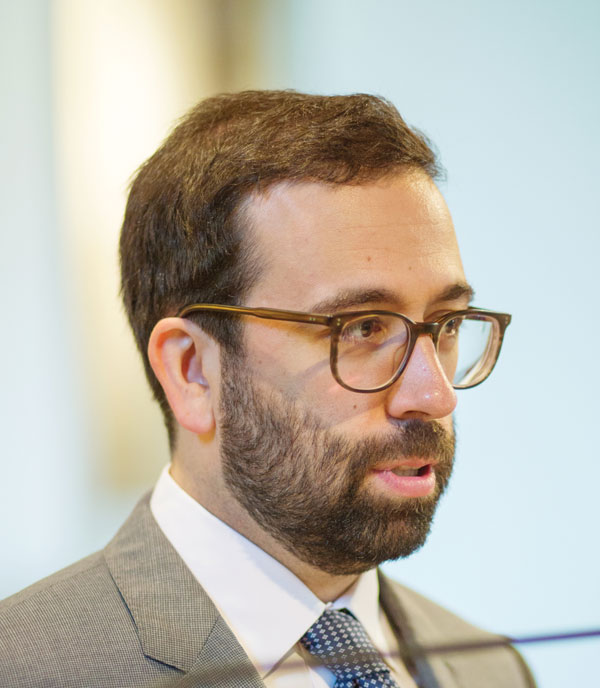The IMF and central banks should work together to resolve financial crises
A major function of the IMF is to provide short-term loans to countries that experience a sudden stop in the inflow of private capital. Left on their own in these circumstances, countries can experience a sharp depreciation of their exchange rates, suffer large recessions, and likely default on their foreign debt. Experience shows that these events can quickly spread to other countries. Some insurance against sudden stops is valuable, if only to smooth the outflow of capital over time, prevent “fire sales” (the sale of assets at prices far below their market value), and limit contagion. Since the 1944 Bretton Woods conference, the causes, features, and consequences of these sudden stops have changed, but the IMF’s role as lender of last resort has endured.
Banks also fall victim to sudden stops, but of a different sort. Sudden stops afflict banks when they lose access to the short-term funding they need to finance their long-term investments. In this situation, they turn to their central bank, an institution that has long served as their lender of last resort.
Recently, these two types of sudden stops have merged. Banks with global operations often borrow in foreign currencies to invest in assets abroad. In 2007, when US dollar money markets froze, some banks outside the United States experienced a sudden stop. As with country sudden stops, this event involved a flow of capital across borders, but it was bank, not sovereign, funding that was at stake. Central banks were ready to take up their role, but their domestic currency had to be converted to foreign currency, and the strains of the financial crisis on foreign exchange markets made the cost of borrowing skyrocket.
The Federal Reserve provided a solution by opening dollar swap lines with central banks in selected countries. Through these arrangements, the Fed lent dollars to these central banks, which in turn lent them to their domestic banks to fund their US dollar investments. Since the sudden stop involved US dollars, the Fed could provide the needed funding and prevent fire sales of dollar assets. As it was domestic banks that needed funding, it was their own central banks—which regulate them and can best assess their solvency and the collateral offered—that provided the funding through their lending facilities and bore the credit risk. In return, the Fed held the other countries’ currency, so it bore almost no risk. If repayment was made, as it always was, this currency would never enter circulation.
The effectiveness of these central bank swap lines can be assessed in two complementary ways. First, central bank lending facilities should cap the rates charged by private lenders and thereby lower the average market rate. Indeed, the various US dollar swap lines significantly lowered a currency’s basis to the dollar relative to currencies that did not benefit from a swap line. Second, banks that have access to a central bank swap line should be relatively more willing to invest in US dollar financial assets, since they can count on the lender of last resort in the event of a crisis. The data show that, after the rate charged on US dollar swap lines fell by 50 basis points in 2011, financial institutions trading in Europe significantly shifted their investments to US dollar bonds.
These loans of last resort are clearly the domain of central banks. Unlike the IMF, central banks can create money quickly, assess the solvency of banks, and judge the quality of collateral. Unlike IMF loans, swap lines are not loans to governments and do not monetize public debt, whether domestic or foreign; they use collateral rather than conditionality as the incentive; and they lead to conventional credit risk for the recipient central bank but little risk for the originator central bank.
In the future, however, the distinction between the role of the IMF and that of central banks in dealing with international sudden stops will likely be less clear.
Why?
First, because capital flows are often intermediated by banks, a run on a country often starts with a run on its banks. Further, because of the diabolic loop that arises when banks hold a large amount of their government’s bonds, the solvency of both becomes intertwined. Central bank swap lines may be used at first, but soon the IMF is called, with the distinction between the two becoming one of timing. In fact, during the euro crisis of 2010–12, the sudden stop in stressed euro area economies first triggered credit between the euro area central banks in their TARGET II (the euro area’s payments processing network) balances. Eventually IMF lending was needed.
Second, central bank lending facilities are set up to deal only with short-term liquidity problems and require a transition to a fiscal operation if the problems persist. When a bank has difficulty repaying the central bank for a prolonged period, the fiscal authorities are called in and a bailout package that replaces monetary with fiscal policy is arranged. Although central banks strive to lend to institutions that are illiquid but solvent, sometimes these institutions turn out to be insolvent. When that happens the problem is fiscal and involves government finances, the purview of the IMF.
Third, the number of central bank swap lines has grown quickly. There are roughly three types of such arrangements today. Type I are bank-focused, as just described. Type II are arrangements such as those between the People’s Bank of China and central banks in countries where there is significant Chinese investment or where large financial centers facilitate bilateral trade settlements between firms. Type III include the Chiang Mai Initiative among Southeast Asian countries, which pools foreign reserves in case of a speculative attack, and the European Central Bank’s Exchange Rate Mechanism II arrangements, which support confidence in exchange rate pegs. Type III swap lines closely complement or substitute for IMF actions; however, they are bilateral, up for frequent renewal, and subject to discretionary political choices between nations, so they can conceivably be withdrawn just as they are needed.
The IMF could play a role in future swap lines and in promoting multilateralism. The Fed has only five standing Type I swap lines, all with advanced economies, but many other central banks, especially in emerging markets, would benefit from them, given the dollarization of their banks and exports. Advanced economy central banks legitimately worry that swap lines may not be honored by recipient central banks and that the foreign currency held could be worth less if the exchange rate is very volatile. The IMF is in the best position to assess this risk, choose the margin to apply to the current exchange rate, and underwrite these contracts. The central bank that is the originator would then bear no risk, nor should it. If the recipient central bank and its government default, the IMF would control how much domestic currency enters circulation, the amount of IMF lending, and how much IMF capital is put at risk. IMF lending and central bank swap lines are very different instruments, but the IMF could play a role in the latter to complement the former.
Opinions expressed in articles and other materials are those of the authors; they do not necessarily reflect IMF policy.










